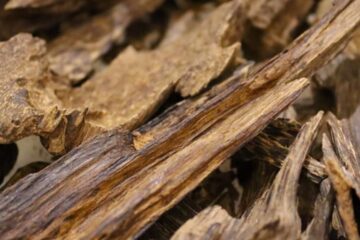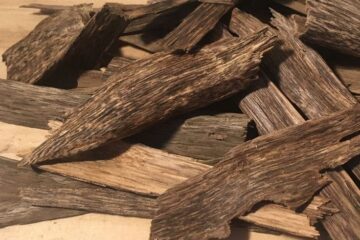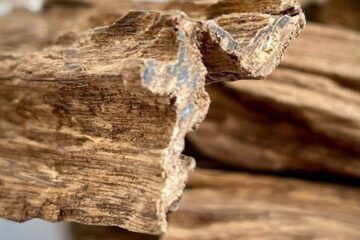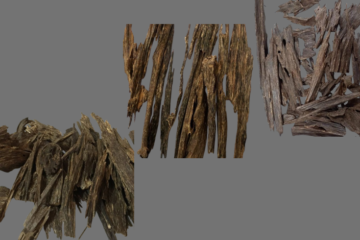Burmese agarwood is a type of natural agarwood extracted from the rare agarwood trees that grow in Burma (Myanmar). It is considered one of the finest agarwoods in the world, known for its unique and powerful fragrance that captivates and enchants. In this article, we will explore the historical, cultural, and economic significance of Burmese agarwood, discuss the forests where it grows, and highlight the markets where it is sold.
Historical Significance of Burmese Agarwood
The history of Burmese agarwood dates back thousands of years, where it was used in religious rituals and cultural celebrations. Agarwood was burned in temples and shrines to purify the air and attract blessings. Traditional medicine also used it to treat diseases and improve overall health. In ancient times, Burmese agarwood was considered a precious gift presented to kings and princes as a symbol of wealth and power.
Cultural Significance of Burmese Agarwood
Burmese agarwood plays a significant role in Burmese culture and other cultures in Southeast Asia. It is used in social occasions such as weddings, births, and religious holidays. Additionally, it is used in spiritual rituals and meditation to achieve serenity and inner balance. In Burmese culture, agarwood is a symbol of purity and purification, used in rituals aimed at expelling evil spirits and attracting positive energy.

Economic Significance of Burmese Agarwood
Burmese agarwood is considered an important economic resource in Burma. It is exported to various countries worldwide, including Saudi Arabia, the United Arab Emirates, Kuwait, Qatar, Bahrain, and Oman. Burmese agarwood is one of the world’s most expensive types of agarwood, with the price per kilogram reaching thousands of dollars. Burmese agarwood contributes to supporting the local economy and providing job opportunities for the local population.
Burmese Agarwood Forests
Agarwood trees grow in the dense forests of Burma, which are considered valuable natural resources. Some of the most important regions for agarwood cultivation include:
– Shan Forests: Located in Shan State in eastern Burma, these forests are among the most important areas for agarwood cultivation.
– Kachin Forests: Located in Kachin State in northern Burma, these forests are also significant for agarwood cultivation.
– Rakhine Forests: Located in Rakhine State in western Burma, these forests are another important region for agarwood cultivation.
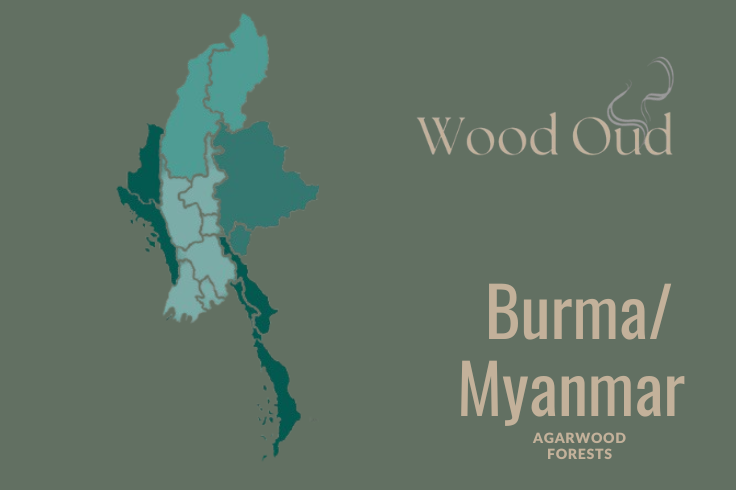
Markets for Burmese Agarwood
Burmese agarwood is sold in various markets within Burma and abroad. Some of the most prominent markets for Burmese agarwood include:
– Bogyoke Aung San Market:
One of the most famous markets in Yangon (Rangoon), it is an ideal place to purchase high-quality Burmese agarwood. Located in the heart of Yangon, it houses a variety of shops selling agarwood and other traditional products.
– Mandalay Market:
Another market where Burmese agarwood can be found. Located in Mandalay, it is an ideal place to purchase agarwood and other traditional products.
– Shwe Pyi Thar Market: One of the well-known markets in Yangon, it features a variety of shops selling Burmese agarwood. Located in Yangon, it is an ideal place to purchase high-quality agarwood.
– Zeigyo Market: Another market where Burmese agarwood can be found. Located in Zeigyo, it is an ideal place to purchase agarwood and other traditional products.
– Bagan Market: Another market where Burmese agarwood can be found. Located in Bagan, it is an ideal place to purchase agarwood and other traditional products.
Health Benefits of Burmese Agarwood
Burmese agarwood is not just a fragrant material; it also has numerous health benefits. It is used in traditional medicine to treat various diseases such as skin inflammations, skin diseases, and respiratory inflammations. Additionally, Burmese agarwood is considered a natural sedative that helps reduce stress and anxiety.
Uses of Burmese Agarwood
Burmese agarwood can be used in various ways, including:
– Burning: Burmese agarwood is burned in special incense burners to purify the air and attract positive energy.
– Topical Application: Burmese agarwood is used in the production of essential oils that can be applied topically to the skin to treat skin inflammations.
– Inhalation: Burmese agarwood is used in the production of fragrances that can be inhaled to reduce stress and anxiety.

Challenges in the Agarwood Trade
Despite the importance of Burmese agarwood, its trade faces several challenges. Some of the main challenges include:
– Counterfeiting: Counterfeiting is one of the major challenges facing the Burmese agarwood trade. Burmese agarwood is often counterfeited and sold at high prices, which negatively impacts the reputation of the genuine product.
– Environmental Exploitation: Environmental exploitation is another challenge facing the Burmese agarwood trade. Trees are often cut down irresponsibly, leading to the degradation of natural forests.
– Legal Regulation: The trade of Burmese agarwood requires strict legal regulation to ensure the quality of the product and prevent counterfeiting and environmental exploitation.
Conclusion
Burmese agarwood is more than just a type of natural agarwood; it is a symbol of history, culture, and economy in Burma. It plays a significant role in the daily lives of the Burmese people and contributes to supporting the local economy and providing job opportunities for the local population. Whether you are looking for Burmese agarwood for personal use or as a gift, it can be the ideal choice for you.

